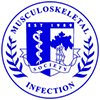Authors: Brent Lanting, Dr. G. Athwal, Dr. D. Naudie
Title: Spontaneous Clostridium Perfringens Myonecrosis of the Shoulder: A Case Report
Addresses: Univ. of Western Ontario, LHSC - UH C9-118, 339 Windermere Rd London ON, Canada, N6A 5A5
Purpose: Clostridium perfringens myonecrosis is a rare, life-threatening infection. This report presents the atypical evolution of Clostridium perfringens myonecrosis in a monitored, healthy young male patient.
Methods: Case Report.
Results: A healthy young male fell 2.5 meters, striking his occiput. He presented with confusion and combativeness. A computed tomography scan revealed an intracranial bleed with a frontal bone fracture. On the second day in the neurosurgical unit, the patient became intermittently febrile without leukocytosis. Blood cultures grew gram-positive cocci. Emperic broad spectrum antibiotics were initiated. On the fifth day of admission, the patient became increasingly agitated. Nursing notes describe swelling and erythema of the right shoulder. His creatinine kinase level rose to greater than 10,000 µmol/L and Clostridium perfringens was identified. Radiographs on day six demonstrated periscapular emphysema (Fig 1). Orthopedic surgery was urgently consulted. The right shoulder was edematous and tender with an area of erythema extending over the scapula, posterior neck and upper arm with crepitus on deep palpation with no superficial lesions. An immediate MRI of the hemodynamically stable patient localized the infection to the supraspinatus and trapezius muscles (Fig 2). The patient was urgently taken to the operating room for irrigation, debridement and exploration of the periscapular tissue and glenohumeral joint and possible shoulder disarticulation or fore-quarter amputation. Decompression of the fascia revealed liquefaction of the supraspinatus muscle (Fig 3) which was debrided, thoroughly irrigated and packed open. The patient was admitted to the ICU and treated with intravenous Penicillin and Clindamycin. The patient returned for surgical debridement every 48 hours on four occasions before definitive closure. At two months of follow-up, the patient had a pain-free range of motion of 80 degrees of forward flexion and 40 degrees of external rotation. At six months the range of motion continues to improve; however strength deficits remain.
Discussion: Literature reveals 25 cases of spontaneous gas gangrene; three of which were shoulder cases. Two cases of spontaneous myonecrosis in a unmonitored healthy patient have been reported (1,2). Diabetes, hematologic pathologies, and gastrointestinal malignancies are causal comorbidities (3-5). Mortality approaches 80 percent. Classical treatment is debridement of devitalized tissue and high dose organism specific antibiotics, typically penicillin G and possibly hyperbaric oxygen. However, evidence indicates that metronidazole, clindamycin, rifampin and tetracycline have better bactericidal activity (6,7).
The presented case illustrates an atypical presentation of C. Perfringens myonecrosis of the shoulder in a previously healthy young patient which physicians should be aware of as well as the potential for hematogenous inoculation. The patient reported was stable but intermittently febrile. The elevated creatinine kinase has not previously been described in literature. A decreased level of consciousness, concomitant infections and no systemic symptoms represent diagnostic challenges.

